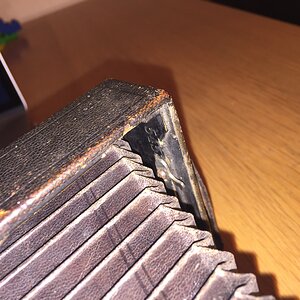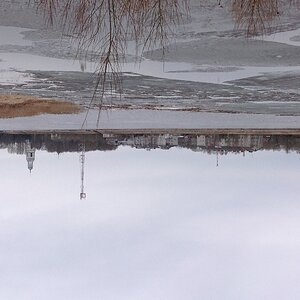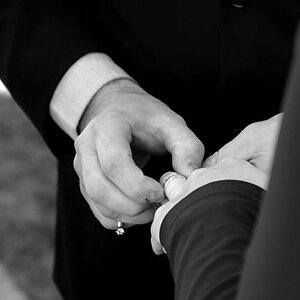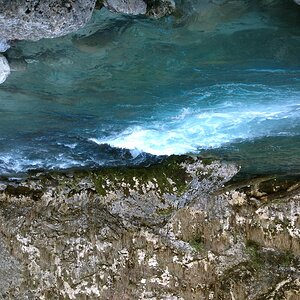Navigation
Install the app
How to install the app on iOS
Follow along with the video below to see how to install our site as a web app on your home screen.

Note: This feature currently requires accessing the site using the built-in Safari browser.
More options
You are using an out of date browser. It may not display this or other websites correctly.
You should upgrade or use an alternative browser.
You should upgrade or use an alternative browser.
What do expensive external flashes have the cheap ones lack?
- Thread starter anubis404
- Start date
Mike30D
TPF Noob!
- Joined
- Apr 29, 2008
- Messages
- 178
- Reaction score
- 1
- Location
- Highland, MI
- Can others edit my Photos
- Photos OK to edit
I believe some of them don't have ETTL. They may not have the wireless capabilities either.
- Joined
- May 1, 2008
- Messages
- 25,422
- Reaction score
- 5,003
- Location
- UK - England
- Website
- www.deviantart.com
- Can others edit my Photos
- Photos OK to edit
weathersealing - top range flashes (least the 580M2) are weathersealed
flash sync speeds
flash head power - also the range of flash effect - these will be greater on the higher end market ones
ETTL - basically from my understanding is automatic flash metering - ie you don't have to understand flash manual settings control to use the flash to good effect
the ability to be a master flash unit - ie to be able to triggor other flash units (slaves) to fire in a multi flash setup
durability and build quality.
Besically if the more expensive units were not worth thier price the pros and advanced amatures would not use them - they would use the cheaper gear and spend the money on something else.
flash sync speeds
flash head power - also the range of flash effect - these will be greater on the higher end market ones
ETTL - basically from my understanding is automatic flash metering - ie you don't have to understand flash manual settings control to use the flash to good effect
the ability to be a master flash unit - ie to be able to triggor other flash units (slaves) to fire in a multi flash setup
durability and build quality.
Besically if the more expensive units were not worth thier price the pros and advanced amatures would not use them - they would use the cheaper gear and spend the money on something else.
Johnboy2978
No longer a newbie, moving up!
- Joined
- Oct 21, 2004
- Messages
- 1,797
- Reaction score
- 30
- Location
- Southwest Virginia
- Website
- www.johncountsphotography.com
- Can others edit my Photos
- Photos OK to edit
The sync speed is the fastest shutter speed that you can use with a flash. Usually 1/180 or up to 1/250.
GeneralBenson
TPF Noob!
- Joined
- Mar 28, 2008
- Messages
- 1,106
- Reaction score
- 18
- Location
- Boulder, CO
- Website
- www.fullertonimages.com
- Can others edit my Photos
- Photos NOT OK to edit
Are there ways to get higher sync speeds? I know my pentax only syncs at 1/180th. I know most seem to be at 1/250th and a few are 1/500th, but I've heard of people shooting higher than that. How can you get faster sync? Is it with triggers and such?
RyanLilly
No longer a newbie, moving up!
- Joined
- Aug 27, 2007
- Messages
- 1,489
- Reaction score
- 10
- Location
- St. Louis, Missouri, USofA
- Can others edit my Photos
- Photos NOT OK to edit
Some flashes do offer "high speed sync" but usually they eat up a lot of power reduce their usable distance from flash to subject. There are some other triggers such as the radio poppers that allow faster sync speeds, but that is a whole other subject.
Usually with a cheap flash you trade off one ore more of the following: TTL metering, Power, recycle time, power adjustment, and/or build quality, etc.
There are some very good third party flash units, you just need to identify and understand their abilities and limitations.
For example, putting together a stobbist kit, you don't care about TTL metering, but you do want as much power as possible especially using umprellas and other modifiers and you want a flash that easily lets you adjust the powwer setting. Fast recycle is nice but usually you can afford a moment between shots because you will likely be repositioning your model or subject anyway. Something along the lines of a Vivitar 285 fit this description well.
Now I you are shooting a wedding, you need Lots of power especially to bounce in big halls, fast recycle time, and TTL metering is quite useful in a fast paced environment where there are no second chances to get the shot. You really need a a Canon 580ex II, or top of the line Nikon.
Really most flashes in the sub $60 range are junk, around $100 there are some pretty decent units, some limitations, but very useful for many things. getting up in the $250+ range are where all the really good units fall.
Just for general picture taking and hobbyist use the $100-250 range is a good balance of price and features IMO.
Usually with a cheap flash you trade off one ore more of the following: TTL metering, Power, recycle time, power adjustment, and/or build quality, etc.
There are some very good third party flash units, you just need to identify and understand their abilities and limitations.
For example, putting together a stobbist kit, you don't care about TTL metering, but you do want as much power as possible especially using umprellas and other modifiers and you want a flash that easily lets you adjust the powwer setting. Fast recycle is nice but usually you can afford a moment between shots because you will likely be repositioning your model or subject anyway. Something along the lines of a Vivitar 285 fit this description well.
Now I you are shooting a wedding, you need Lots of power especially to bounce in big halls, fast recycle time, and TTL metering is quite useful in a fast paced environment where there are no second chances to get the shot. You really need a a Canon 580ex II, or top of the line Nikon.
Really most flashes in the sub $60 range are junk, around $100 there are some pretty decent units, some limitations, but very useful for many things. getting up in the $250+ range are where all the really good units fall.
Just for general picture taking and hobbyist use the $100-250 range is a good balance of price and features IMO.
tenlientl
TPF Noob!
- Joined
- Sep 28, 2008
- Messages
- 256
- Reaction score
- 0
If I wanna shoot at like 1/400, is there a way to use my built in(sync speed of 1/200) WITH an external? So built in flash goes first, the second flash will be from the external?
I'd like to know this before I decide to get a flash. Which is not soon, but I would like to know what I'm dealing with.
I'd like to know this before I decide to get a flash. Which is not soon, but I would like to know what I'm dealing with.
TBAM
TPF Noob!
This may be a "duh" moment. But, the reason why you can't sync over 1/180 on most flashes, is because hypothetically, if you were using faster shutter speeds than that, the shutter would be closing faster than the flash was firing. So you would get a much lesser effect of the flash.
A flash that would fire with the same intensity of light, but fast enough to keep up with faster shutter speeds, would be quite difficult to obtain without spending a good deal of money.
A flash that would fire with the same intensity of light, but fast enough to keep up with faster shutter speeds, would be quite difficult to obtain without spending a good deal of money.
anubis404
TPF Noob!
- Joined
- Apr 5, 2008
- Messages
- 955
- Reaction score
- 0
- Can others edit my Photos
- Photos OK to edit
Joves
No longer a newbie, moving up!
- Joined
- Dec 14, 2007
- Messages
- 2,400
- Reaction score
- 22
- Location
- Flagstaff/Az
- Website
- joves.smugmug.com
- Can others edit my Photos
- Photos NOT OK to edit
The flash output for the given settings of the camera for one. That is the advantage of iTTL, the flash and, camera talk to each other to give you the best results.
- Joined
- May 1, 2008
- Messages
- 25,422
- Reaction score
- 5,003
- Location
- UK - England
- Website
- www.deviantart.com
- Can others edit my Photos
- Photos OK to edit
Yep = the flash unit will attempt to pick the best powersetting for itself.
As for the flash you link at $8 - that is £4 to me I would not touch it. Its cheap, and it looks plasticy. So chances are first off that its build will be weaker; next the controls on the back hint at an auto mode, but chances are that its a weak auto mode (ie not very good) following on from there you would probably have to use it in full manual and that would mean knowing how to use it well.
After that its flash power will be weaker, and its recycle time (time it takes for it to recharge after flashing) will probably be long - so no quick firing shots.
Its dirt cheap so expect dirt cheap results -
As for the flash you link at $8 - that is £4 to me I would not touch it. Its cheap, and it looks plasticy. So chances are first off that its build will be weaker; next the controls on the back hint at an auto mode, but chances are that its a weak auto mode (ie not very good) following on from there you would probably have to use it in full manual and that would mean knowing how to use it well.
After that its flash power will be weaker, and its recycle time (time it takes for it to recharge after flashing) will probably be long - so no quick firing shots.
Its dirt cheap so expect dirt cheap results -
Double H
TPF Noob!
- Joined
- Nov 12, 2007
- Messages
- 550
- Reaction score
- 24
- Website
- doublehmedia.com
- Can others edit my Photos
- Photos NOT OK to edit
Vivitar makes a nice flash, but will it work properly with your camera body? That's the key. I needed all the bells & whistles to work properly with my camera body especially for shooting weddings. From a small fill to illuminating a large reception, my SB-800 is amazing. So, for me to spend a few dollars on an inexpensive unit would have only left me wanting more power, versatility, and reliability—so I just bit the bullet and bought a unit which offers all of the above while working/syncing properly with my camera body. For doing portraits, you want just the right amount of fill. However, if that's all you are using for portraits, I suggest having two, or more and using remote triggering and some sort of diffusion. A single flash can be useful for portrait work, however, you will want the bells and whistles that come with a unit like a good quality speedlight.
Similar threads
- Replies
- 6
- Views
- 639
- Replies
- 16
- Views
- 1K

![[No title]](/data/xfmg/thumbnail/32/32702-7344d6e6132276dd7bfc046084fea432.jpg?1619735604)
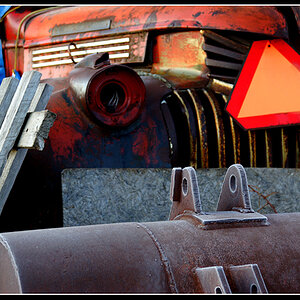
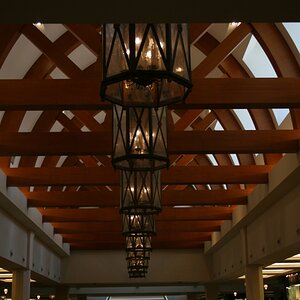
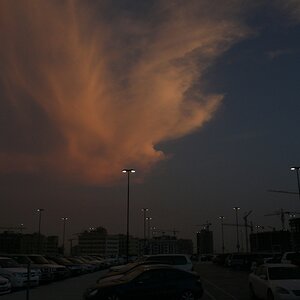
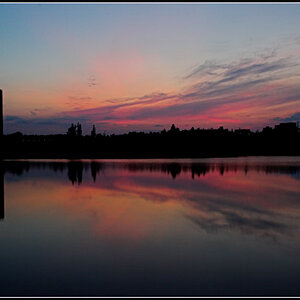
![[No title]](/data/xfmg/thumbnail/32/32701-51bacbc6ea9d40683123c14f053d4742.jpg?1619735603)
